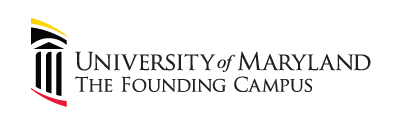Sensory-Motor Rehabilitation Post Stroke
| Status: | Recruiting |
|---|---|
| Conditions: | Neurology |
| Therapuetic Areas: | Neurology |
| Healthy: | No |
| Age Range: | 18 - 80 |
| Updated: | 12/16/2018 |
| Start Date: | January 2019 |
| End Date: | October 2020 |
| Contact: | Chunyang Zhang, M.D. |
| Email: | ChunyangZhang@som.umaryland.edu |
| Phone: | (410) 706-8625 |
Early after stroke, patients often have significant motor impairment and sensory deficit.
Evidence has demonstrated heightened plasticity and significant recovery in the acute phase
(first months) post stroke but there has been a lack of effective and practical protocols and
devices for early intensive sensorimotor therapy.This research study will conduct a
randomized clinical trial of an intensive motor-sensory rehabilitation on patients with acute
stroke using a wearable rehabilitation robot. The primary aims are to facilitate sensorimotor
recovery, reduce ankle impairments, and improve balance and gait functions. This clinical
trial will be conducted on the Study and Control groups of acute stroke survivors.
Evidence has demonstrated heightened plasticity and significant recovery in the acute phase
(first months) post stroke but there has been a lack of effective and practical protocols and
devices for early intensive sensorimotor therapy.This research study will conduct a
randomized clinical trial of an intensive motor-sensory rehabilitation on patients with acute
stroke using a wearable rehabilitation robot. The primary aims are to facilitate sensorimotor
recovery, reduce ankle impairments, and improve balance and gait functions. This clinical
trial will be conducted on the Study and Control groups of acute stroke survivors.
The study will investigate an early intensive rehabilitation in acute stroke for motor
relearning, reducing ankle impairments and improving balance and mobility/locomotion
functions.
The acute stroke survivor will be randomly placed into two groups. Subjects in the Study
group will receive robot-aided motor relearning under real-time feedback, stretching under
intelligent control, sensory stimulation, and active movement training with interactive
games. Subjects in the Control group will receive passive movement in the middle ROM without
intelligent stretching and active movement training without robotic guidance.
For both groups, the therapeutic training will be conducted during 5 hourly sessions each
week over 3 weeks. Both groups will also receive the standard of care in the hospital and
rehabilitation service. Treatment outcome measures will be obtained through blinded
assessments and evaluated before and after training involving biomechanical, neuromuscular
and clinical outcome measures. Carry-over effects will be further evaluated 1 month after the
treatment ends.
Aim 1: To evaluate biomechanical and neuromuscular changes as defined by the passive and
active range of motion (ROM), flexor-extensor muscle strength, joint stiffness,
proprioception and reflex excitability, and compare these measures between the two groups.
The biomechanical and neuromuscular outcome measures will be obtained through blinded
assessments and evaluated before and after training using the wearable rehabilitation robot.
Hypothesis 1: Robot-guided motor relearning, stretching and active movement training (Study
group) will improve the biomechanical and neuromuscular outcome measures more than those of
the Control group.
Aim 2: To evaluate the clinical outcome measures as defined by Fugl-Meyer score (lower
extremity), modified Ashworth scale, Berg balance scale, 10 meter walk test, and to compare
between the Study and Control groups.
Hypothesis 2: The Study group will improve the clinical outcome measures more than the
Control group.
relearning, reducing ankle impairments and improving balance and mobility/locomotion
functions.
The acute stroke survivor will be randomly placed into two groups. Subjects in the Study
group will receive robot-aided motor relearning under real-time feedback, stretching under
intelligent control, sensory stimulation, and active movement training with interactive
games. Subjects in the Control group will receive passive movement in the middle ROM without
intelligent stretching and active movement training without robotic guidance.
For both groups, the therapeutic training will be conducted during 5 hourly sessions each
week over 3 weeks. Both groups will also receive the standard of care in the hospital and
rehabilitation service. Treatment outcome measures will be obtained through blinded
assessments and evaluated before and after training involving biomechanical, neuromuscular
and clinical outcome measures. Carry-over effects will be further evaluated 1 month after the
treatment ends.
Aim 1: To evaluate biomechanical and neuromuscular changes as defined by the passive and
active range of motion (ROM), flexor-extensor muscle strength, joint stiffness,
proprioception and reflex excitability, and compare these measures between the two groups.
The biomechanical and neuromuscular outcome measures will be obtained through blinded
assessments and evaluated before and after training using the wearable rehabilitation robot.
Hypothesis 1: Robot-guided motor relearning, stretching and active movement training (Study
group) will improve the biomechanical and neuromuscular outcome measures more than those of
the Control group.
Aim 2: To evaluate the clinical outcome measures as defined by Fugl-Meyer score (lower
extremity), modified Ashworth scale, Berg balance scale, 10 meter walk test, and to compare
between the Study and Control groups.
Hypothesis 2: The Study group will improve the clinical outcome measures more than the
Control group.
Inclusion Criteria:
1. First time unilateral acute stroke, hemorrhagic or ischemic, 24 hours after admission
in hospital to 1 month post stroke.
2. Hemiplegia or hemiparesis
3. Age 18-80
4. Ankle impairments
Exclusion Criteria:
1. No impairment or very mild ankle impairment of ankle.
2. Unstable medical conditions that interferes with ability to training and exercise.
3. Severe cardiovascular disorders that interfere with ability to perform moderate
movement exercises.
4. Cognitive impairment or aphasia with inability to follow instructions
5. Pressure ulcer, recent surgical incision or active skin disease with open wounds
present below knee of treated limb
6. Severe pain in legs
We found this trial at
1
site
621 West Lombard Street
Baltimore, Maryland 21201
Baltimore, Maryland 21201
(410) 706-7101

Principal Investigator: Li-Qun Zhang, Ph.D.
Phone: 410-706-8625
University of Maryland, Baltimore Welcome to the University of Maryland, Baltimore (UMB) founded in 1807...
Click here to add this to my saved trials